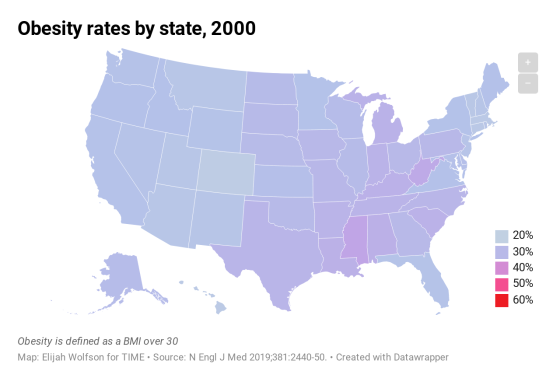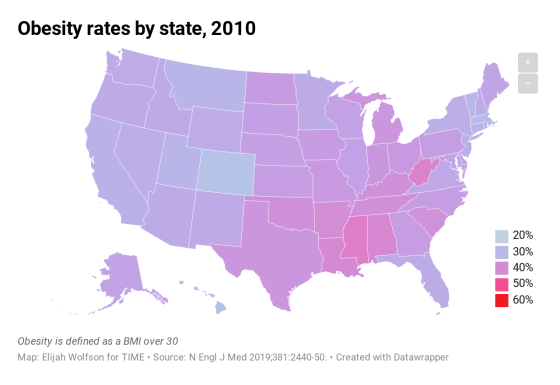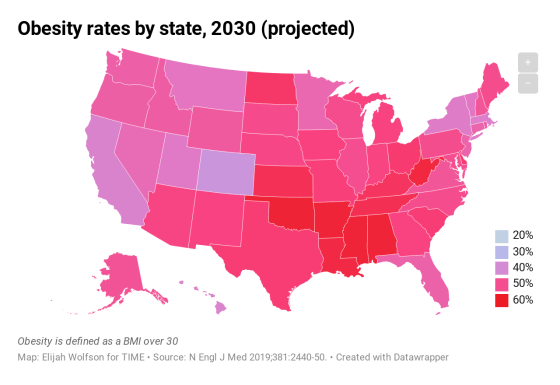Obesity continues to be a serious health problem in the U.S., contributing to heart disease, diabetes, joint disorders and even certain types of cancer. And according to the latest data, more Americans will be obese by 2030 than ever before.
In a study published in the New England Journal of Medicine, researchers led by Zachary Ward at the Harvard T. H. Chan School of Public Health analyzed body mass index (BMI) data reported by more than 6.2 million adults who answered questions for the Behavioral Risk Factor Surveillance System Survey (BRFSS), a large phone-based survey conducted by the U.S. Centers of Disease Control and Prevention (CDC) and other federal agencies. Because height and weight are self-reported in this survey, the researchers compared these data to those collected from more than 57,000 people in the National Health and Nutrition Examination Survey (NHANES), another CDC-led database that includes both interviews and physical exams. Using the NHANES data as a template, the scientists adjusted the data from BRFSS to account for any potential self-reporting biases.
The researchers found that, over the past few decades, rates of obesity, defined as having a BMI of 30 or greater, have been rapidly rising. For example, in 2000, no state had an obesity rate higher than 35%.

By 2010, a full 27 states were over that mark.

By 2019, every single U.S. state had an obesity rate higher than 35% except two: Colorado and Hawaii (and the District of Columbia). Ten states were over 45%, and Mississippi, the state with the highest obesity rate, nearly hit 50%.

Then, using current trends in overweight and obesity from each state, the researchers projected into the future, and found that by 2030, one in two adults in the U.S. will be considered obese, and one in four will be considered severely obese, with a BMI of 40 or higher. In 29 states, obesity rates will climb to over 50%.

The data suggest that most of those considered obese will be non-Hispanic black women with yearly household incomes of less than $50,000, reflecting overall trends showing higher obesity rates among non-Hispanic blacks than among non-Hispanic whites, and among people of lower income compared to those of higher income. Income in particular is a striking factor in obesity; regardless of where people live in the country, lower income is more likely to be associated with overweight or obesity.
The data highlight the urgent need to find even more ways to address diet, exercise and lifestyle factors that can contribute to weight gain, including nutrition education, access to safe places to walk or exercise, and support for avoiding sedentary behavior throughout the day.
No comments:
Post a Comment